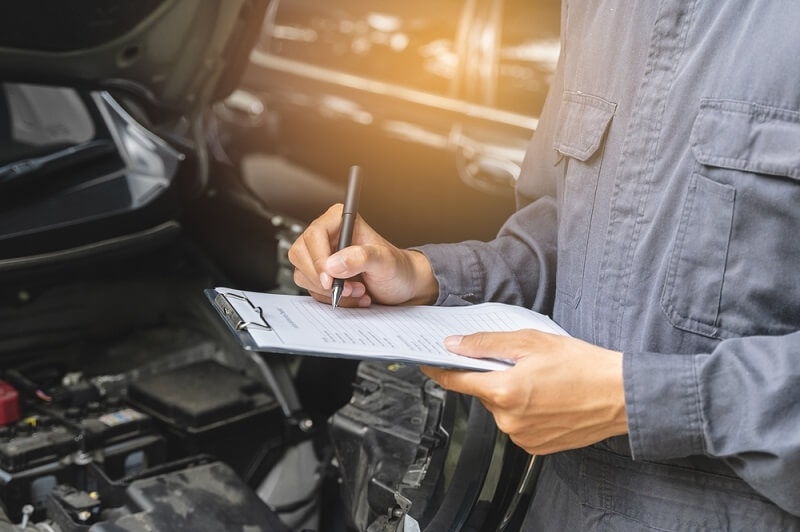
This year, 2025, is already marked with significant vehicle safety recalls, as manufacturers contend with software problems, battery defects, braking failures, and more. With consumer safety paramount and technology advancing rapidly, all drivers must know key car recalls in 2025. This exhaustive guide addresses vehicles, brands, models, and safety fixes from this year's most significant recalls.
We will also cover how to perform a recall check by VIN, what prompts a recall, and what to do if your vehicle is being recalled. Whether you have just purchased your first vehicle or are looking for your next one, knowing about recent auto recalls and navigating the NHTSA recall list can help you avoid serious dangers on the road.
A vehicle recall occurs when a car manufacturer or the National Highway Traffic Safety Administration (NHTSA) determines that a car model has a safety defect and/or does not comply with federal safety standards. In 2025, as vehicles become more interconnected and electric, issues can arise from faulty mechanical components and software.
Automakers must provide free safety repairs and contact all registered owners after issuing recalls. Not taking care of a recall puts you and others in danger and may affect your insurance or resale value.
Let’s summarize the most significant car recalls 2025, manufacturer by manufacturer, including the issue, models affected, and the resolution.
Issue:
A significant software issue affected some of Tesla’s Full Self-Driving (FSD) autonomous driving capabilities. The main problem could lead to unintended lane departure and rapid deceleration.
Models recalled:
Units affected: 1.2 million
Fix:
Tesla created an over-the-air software update to resolve the issue. Owners were notified via app and email.
Issue:
In the F-150 Lightning, battery module contamination led to fire risks. For the Escape Hybrid, coolant leaks posed engine overheating dangers.
Models Recalled:
Units Affected: 750,000
Fix:
Battery inspections and replacements in Lightning; engine sensor updates and hardware replacement in Escape Hybrid.
Issue:
Fuel pump failure and faulty airbags. Affected vehicles could stall while driving, or airbags may not deploy during a crash.
Models Recalled:
Units Affected: 800,000+
Fix:
Free replacement of fuel pumps and airbag modules at dealerships.
Issue:
Battery overheating in the Hyundai Ioniq 5 and Kia EV6 was caused by faulty battery management software. Some models also reported unexpected power loss.
Models Recalled:
Units Affected: 670,000 combined
Fix:
OTA software updates plus physical inspections of battery systems. Some units required battery replacement.
Issue:
Improperly fastened brake calipers and software malfunction affecting the iDrive infotainment system and backup camera.
Models Recalled:
Units Affected: 400,000
Fix:
Dealership fix for brake calipers and OTA patch for infotainment bugs.
Issue:
Electrical shorts in the front camera system are used for lane keeping and emergency braking. Could turn off driver-assist features without warning.
Models Recalled:
Units Affected: 500,000
Fix:
Camera system replacement and software patch.
Issue:
Improperly sealed battery packs raised water intrusion concerns, leading to potential short circuits and fire hazards.
Models Recalled:
ID.4 (2022–2024)
Units Affected: 150,000
Fix:
Physical battery inspection, seal replacement, and improved drainage channels.
Issue:
Recurring battery fire risks persisted for the Bolt EV. The Equinox had steering sensor faults that could lead to power steering loss mid-drive.
Models Recalled:
Units Affected: 600,000+
Fix:
Battery replacements in the Bolt, recalibration, and sensor swap in the Equinox.

If you're wondering whether your car is safe, the best place to start is a recall check by VIN.
Locate Your VIN: Found on your dashboard, driver’s side door frame, or insurance documents.
Go to the NHTSA Website: Visit nhtsa.gov/recalls
Enter Your VIN: The system checks for open recalls on your vehicle.
Get Fix Details: It will tell you if there’s a recall, what the issue is, and what your next steps should be.
You can also sign up for email alerts to stay up-to-date on manufacturer recall updates and recent auto recalls.
Once you’ve confirmed a recall, here’s what to do:
With more advanced tech in every car—from battery packs to driver-assistance systems—recalls in 2025 are often software-related or tied to complex electronic components. As thermal management and charging systems evolve, the growing fleet of electric vehicles (EVs) also plays a role.
The NHTSA recall list is updated in real time and keeps U.S. drivers informed. The agency:
By law, automakers must notify customers and offer repairs for free once a recall is issued.
Please don't worry about getting blindsided by a manufacturer's notice. Here are simple ways to stay ahead of potential issues:
If you buy a new or used car, register it online with the brand. That ensures you get recall notifications immediately.
Apps like Carfax, NHTSA’s SaferCar, or even your automaker’s app can send you push notifications.
Dealerships often run your VIN through the recall database at every service visit.
Some drivers worry recalls will hurt trade-in or resale value. That’s only true if you ignore them.
Best Practice: Keep repair records and complete any recall work before selling or trading your vehicle.
As car manufacturers strive to innovate, we will see setbacks. Transparency and responsiveness are essential; by 2025, most manufacturers will do a decent job with both. Informing yourself with information such as the NHTSA recall list or using apps that can check for recalls by VIN gives you the power.
Whether you have a luxury EV, a family SUV, or a smaller commuter car, today's cars are safer to drive than ever before if you are aware of the updates! Please bookmark this page and check back regularly so we can keep you in the loop. We will continue to track the major car recalls of 2025!
This content was created by AI